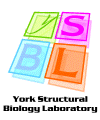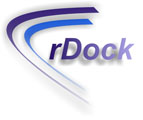
|
 |
 |

|
Obtaining rDock |
| How to obtain the rDock platform. |
| End User License Agreement |
The following provides additional clarification of the license and what it means. If you require any further information, then please email rdock@ysbl.york.ac.uk. The basic aim is to ensure that rDock is available for all to use, improving docking protocols and keeping the program "alive" as new operating systems appear. In addition, we want to encourage people to continue to enhance and improve the use and operation of rDock. The end-user license agreement only refers to the core rDock program. There is a difference between the core rDock executable and ancillary software (graphical interfaces, pre and post filtering etc). The licence agreement specifically relates to the core software - that is the executable and the essential scripts and parameter files that rDock relies on. From past experience, the only way for a program to survive is to keep one version. If you make modifications, and you want these to be consistent with new releases, then you need to pass them back to York. You cannot distribute the software or modifications to others. There is a software committee that decides which improvements are incorporated into the Master version that is then released to users. We can acknowledge people's contributions (they can write papers, have acknowledgement in documentation etc), but any modifications to the core program belong to Vernalis. However, ancillary software belongs to whoever makes it. It doesn't have to be sent back to York for distribution, but clearly, it would be good if it was. By example, any self-standing program - such as a viewer for post-process docking - belongs to whoever wrote it. It is excluded from the definition of the software - which is just rDock itself. A second example would be that you have some ideas about improvements to the scoring function. This is slightly more detailed. The implementation of such a scoring function within rDock is a Modification to the Software. If you want to ensure future versions released by York are compatible, then you have to return the implementation to York for incorporation into the Master version. However, implementation of a scoring function within another program is nothing to do with rDock and for you to do as you wish. To be clear - the only thing which you don't acquire rights to is the implementation within the rDock program itself. And that doesnt stop you from having acknowledgements within the documentation, papers etc. |